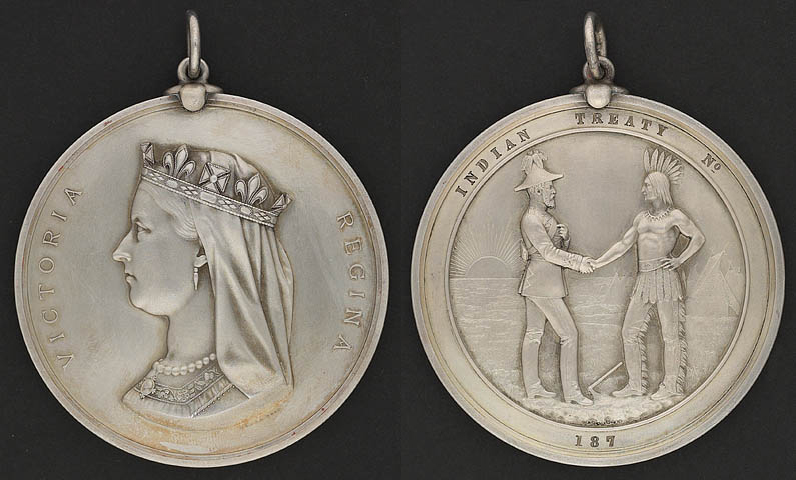Treaty 4 was signed in 1874. This treaty is also known as the Qu’Appelle Treaty because it was signed at Fort Qu’Appelle, Saskatchewan. The treaty was signed by the federal government and the Cree and Saulteaux. Like all other Numbered Treaties, Indigenous peoples gave up much land to the government. Most of this land is located in southern Saskatchewan. As with the other Numbered Treaties, Treaty 4 remains controversial.
This article is a plain-language summary of Treaty 4. If you are interested in reading about this topic more in depth, please see our full-length entry, Treaty 4.

Background
In the early 1870s, the federal government did not want to make any more treaties with Indigenous peoples. By 1873, it had already made three such treaties. Not everyone agreed. Alexander Morris believed a treaty was badly needed. Morris was the lieutenant-governor of Manitoba and the North-West Territories. Many changes were taking place in this territory. Settlers, Métis and whisky traders were arriving in southern Saskatchewan. Morris worried that this could cause friction with First Nations peoples in the area. He also worried that Indigenous peoples could face starvation. They relied on the bison for food. The bison were being overhunted. In 1874, Morris convinced Ottawa to make a treaty with Indigenous peoples in the Qu’Appelle region.
Treaty Negotiations
Treaty negotiations were difficult. Both sides did not want to give in. The Saulteaux did not trust the government. Another problem was that few First Nations attended meetings at first. Many were busy hunting bison. Also, they could not agree on a place to meet. In time, though, they finally did begin talking. The leaders of the First Nations agreed to similar terms as those in Treaty 3. They asked the government to provide a payment of $15 every year. They also asked the government to pay the debts they owed to the Hudson’s Bay Company. The government refused. The treaty was signed on 15 September 1874. Not all First Nations communities signed the treaty at the time, though. Some signed a little later.
Written Terms of the Treaty
Treaty 4 promised each person a payment of $12 at the signing and $5 every year after. Chiefs were to receive $25 dollars soon after signing and $25 every year. They also got clothes. Four leaders of every community were to receive $15 every year. Families of five were to receive 640 acres of land. Furthermore, the treaty stated that farming tools, ammunition, reserves and schools would be provided.
Controversies
From the very beginning there were problems. First, the government did not create reserves until 1876. Therefore, First Nations could not start farming. Moreover, Cree chief Piapot argued that the government should provide education about farming, medicine, stores, gristmills, blacksmiths and farm machinery. The government made no changes to the treaty. Also, the First Nations ended up losing even more land than was agreed upon. They did not get the land back until over 100 years later. In 1995, the government gave Treaty 4 peoples $6.6 million. Some of that money was used to purchase more land.
One of the biggest controversies has to do with the extent to which First Nations could understand the Euro-Canadian terms of the treaty. Many argue that the Treaty 4 peoples did not think they would be giving up all their land. Rather, they thought that the land would be shared. In addition, some have put forth that those who signed Treaty 4 believed that they should still have the right to self-government. Also, some argue that the government should provide Treaty 4 peoples with modern education and more financial help. Thus far, the controversies surrounding Treaty 4 have yet to be solved.

 Share on Facebook
Share on Facebook Share on X
Share on X Share by Email
Share by Email Share on Google Classroom
Share on Google Classroom





